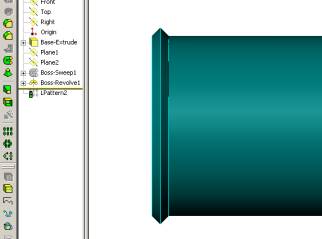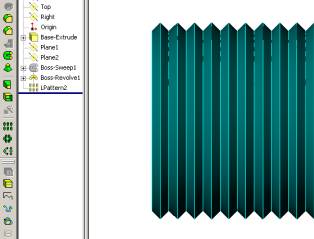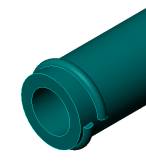
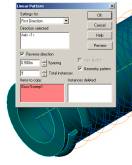
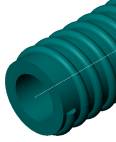
Tip #10: 12/13/2000
When dealing with threads on SolidWorks models there are several performance principles to keep in mind. Swept threads are complex shapes that take more processing to generate and rebuild than most other features. Therefore, the simpler you can keep them, the more efficient your model will be.
Proper profile creation can make or break sweeps. Mathematical inconsistencies can occur if a sweep profile has any coincidence (or converted edges) to model faces or edges where the newly generated sweep should blend. The following link from the SolidWorks Knowledge Base illustrates this concept. Embedded profiles
The sweep profile should typically be on a plane created normal to the end of the helix. This ensures accurate cross sectional properties through the entire sweep. This is especially true with higher pitch threads.
Sweeps cannot intersect themselves. Make sure that the profile size (max. dimension in the axial direction of the helix) is smaller than the helix pitch.
A helix in SolidWorks is a mathematical approximation independent of the number of revolutions. The more revolutions you have, the poorer the approximation. It is often beneficial to keep the helix as simple as possible and then use linear geometry patterning to generate the remainder of the thread revolutions as shown below.



Fig. 1 Fig. 2 Fig. 3
SolidWorks provides users with two levels of geometry checking to prevent poor or inconsistent geometry. The following link from the SolidWorks Knowledge Base explains this principle. Body checking
Leave the “Verification on rebuild” option turned off to prevent long rebuild times through design iteration. Only turn the option on if you are concerned about the geometric integrity of the model after visual inspection. Force a rebuild and check for accompanying errors. If none are present, turn “Verification on rebuild” off again.
This principle of body checking brings up another principle. If the feature on which the swept thread lies is complex, modifying the underlying feature will cause additional geometry checking on the swept threads. This is processor intensive. Therefore, whenever possible, keep the underlying feature simple. Add additional detail through separate features. This will help minimize the amount of body checking that occurs during the design iteration phase of a model.
As with any other part with complex geometry, it is a good practice to create a simplified configuration of the part to be used in assemblies or to simply boost performance while modeling the part. Threads can be simplified by suppressing the sweep feature used to create the threads or by extruding or revolving material over them. Accordion threads can also be created to give the look of a threaded part without the complex geometry of a sweep. The image below illustrates this principle.
